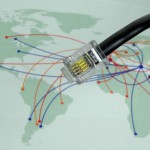By Nadia Babaali,
Communications Director, FTTH Council Europe
 What does 100Mbps mean for you? At nearly twenty times the average broadband speed in most European countries, a 100Mbps connection would make it possible to download an entire music album in five seconds, a TV show in 30 seconds and a high-definition movie in just seven minutes. A lucky 0.5{e1f18614b95d3cd6e4b3128e1cd15d99b042a60a5a19c19b7a8e07e7495efa10} of internet users in Europe are currently able to access this kind of speed, according to figures published by the European Commission.
What does 100Mbps mean for you? At nearly twenty times the average broadband speed in most European countries, a 100Mbps connection would make it possible to download an entire music album in five seconds, a TV show in 30 seconds and a high-definition movie in just seven minutes. A lucky 0.5{e1f18614b95d3cd6e4b3128e1cd15d99b042a60a5a19c19b7a8e07e7495efa10} of internet users in Europe are currently able to access this kind of speed, according to figures published by the European Commission.
But ultra-fast broadband over fibre to the home (FTTH) is about much, much more than just doing the same things faster. We already know that, with bandwidth, the only way is up. We can easily see that more bandwidth will be needed by extrapolating from current requirements. And we know that fibre is the only transmission medium that can support this increase in demand.
Historically, the demand for bandwidth has grown year on year, pushed by faster computers, higher-resolution displays, and the trend towards downloading more images and videos. In fact, the increase in bandwidth is so predictable that internet usability guru Jakob Nielsen devised a Law of Internet Bandwidth, which states that bandwidth requirements increase by 50{e1f18614b95d3cd6e4b3128e1cd15d99b042a60a5a19c19b7a8e07e7495efa10} each year. Although this sounds like a huge increase, all the data points follow the law perfectly from 1983 right up to the present day, more than 10 years after the law was originally proposed.
At the FTTH Council Europe, we often get asked why anyone needs the abundant bandwidth of FTTH. Can we name a service that not only benefits from FTTH, but requires it? In fact, applications that need FTTH are available now. However, in a number of cases we see developers actually downgrading their applications so that they work less well, because the networks aren’t fast enough to support them. It’s a classic chicken and egg situation.
For example, in February 2010 German web hosting firm Strato launched a remote online storage application called HiDrive, which offers 100GB of capacity for €4.90 per month. In December it brought a similar offering to the UK priced at £19.00 (€22) per month for 500GB, but because the majority of UK users are still on slower DSL connections, Strato also had to introduce a DVD send-in service.
Applications with significant benefit to governments and local authorities, such as e-learning and e-health, are also available today, but are being constrained by the networks’ ability to support them. For instance, French start-up Link Care Services provides remote video monitoring for patients with Alzheimer’s and other cognitive diseases. Today all of its customers are behind DSL lines, and the firm is frustrated by the restrictions that this imposes. It is only possible to upload two low quality video feeds from the home to the control centre simultaneously; with FTTH they would have the upload capacity to monitor all the rooms in the patient’s home.
Also in healthcare, PT Inovação, the R&D arm of Portugal Telecom, has developed a system to allow healthcare professionals to cooperate with each other on a diagnosis, using video conferencing, data sharing and other collaborative online tools over a fibre connection. The high bandwidth of fibre is important for a successful remote consultation. It is vital that doctors have full confidence in the live images that they are seeing, otherwise it could lead to mis-diagnosis with potentially disastrous impact on the patients.
E-learning is starting to become more commonplace, and will be a much better experience over high-bandwidth connections. French firm Erdenet is in the business of supplying web-based learning courses that students can follow at their own pace, using interactive video and online collaboration. With an ordinary DSL connection, it’s very difficult to add rich media – video, sounds, and maps. This is a tool that calls out for a fibre connection, directly linking the rich media to the pupil.
As you can see, many different kinds of services are possible over fibre. Some next-generation services will be always-on, running in the background while the homeowner gets on with other tasks. The modern family is a connected family, which means that different members of the same household will be accessing the internet simultaneously. If you add in government-backed services such as e-health and remote learning, it is easy to see how this will add up to significant consumption of bandwidth. The answer to the question: “What services will fill the pipe?” is simply “All of them”.
May 2, 2025











